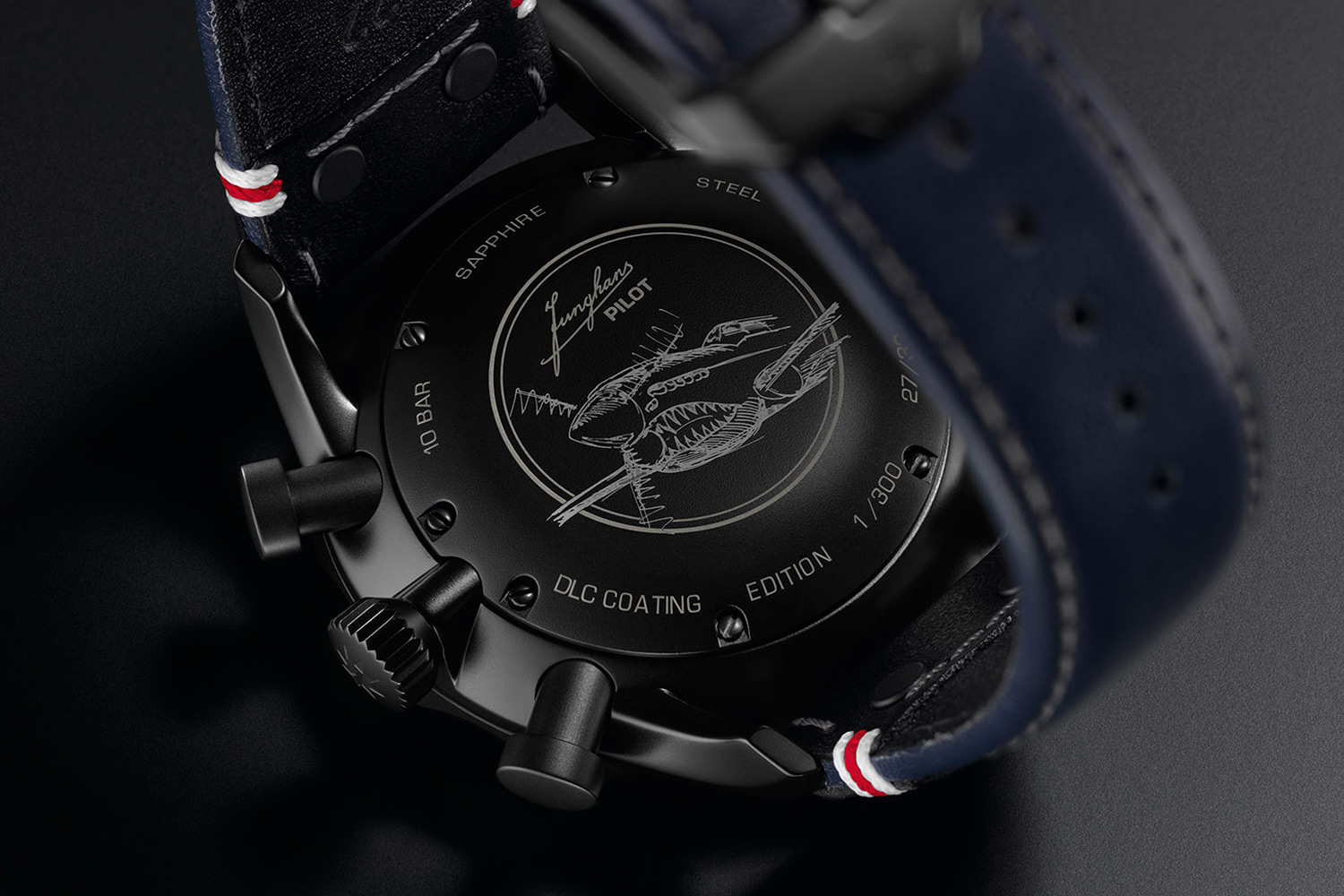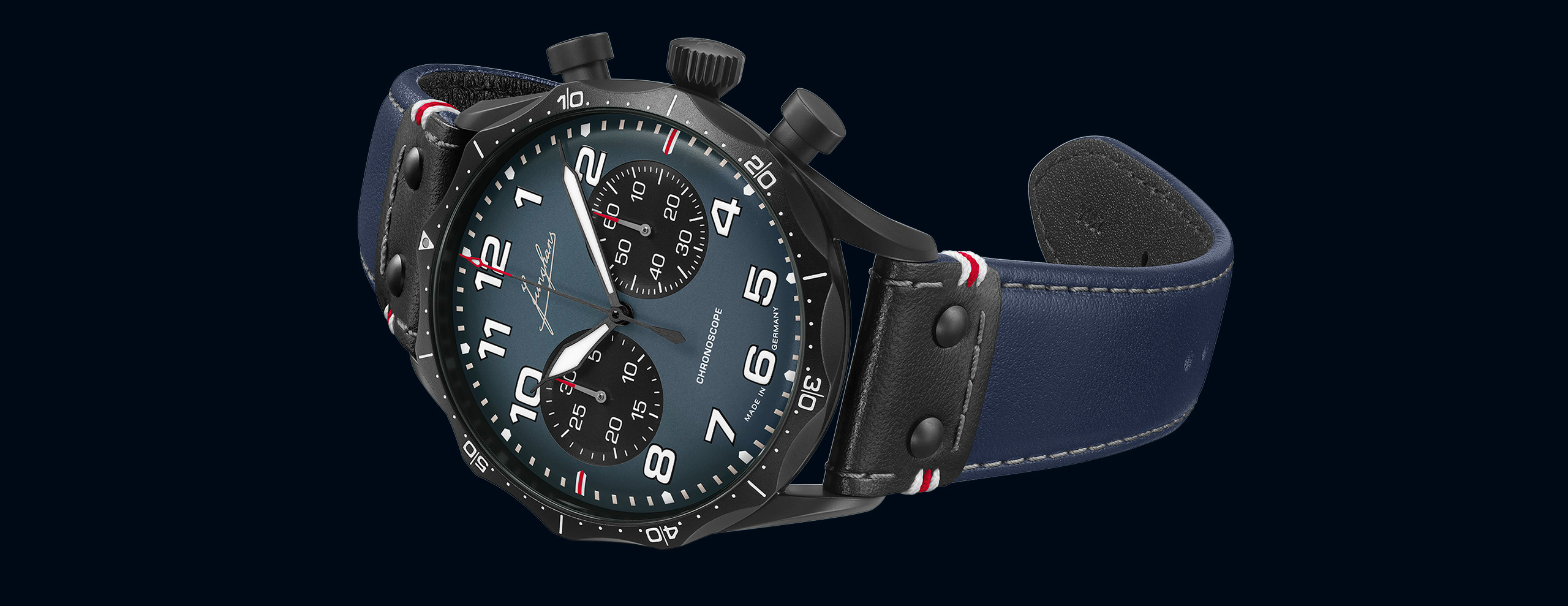Since its establishment in the early 20th century, Junghans has been a renowned manufacturer of mechanical timepieces that have played a vital role in aviation history. These timepieces served as indispensable instruments for determining flight duration in airships and airplanes, long before the advent of GPS tracking systems. In fact, Junghans timepieces were crucial for determining position, speed, and distance during this era.
One of the most significant artifacts from this period is the original airship clock, which has been remarkably preserved and stands as a testament to the extensive use of Junghans timepieces in aeronautics. This clock was utilized in the cockpit of the Zeppelin L55, a remarkable airship that reached an altitude of over 7,600 meters in 1917 while skillfully avoiding British reconnaissance planes, thereby setting a new record.
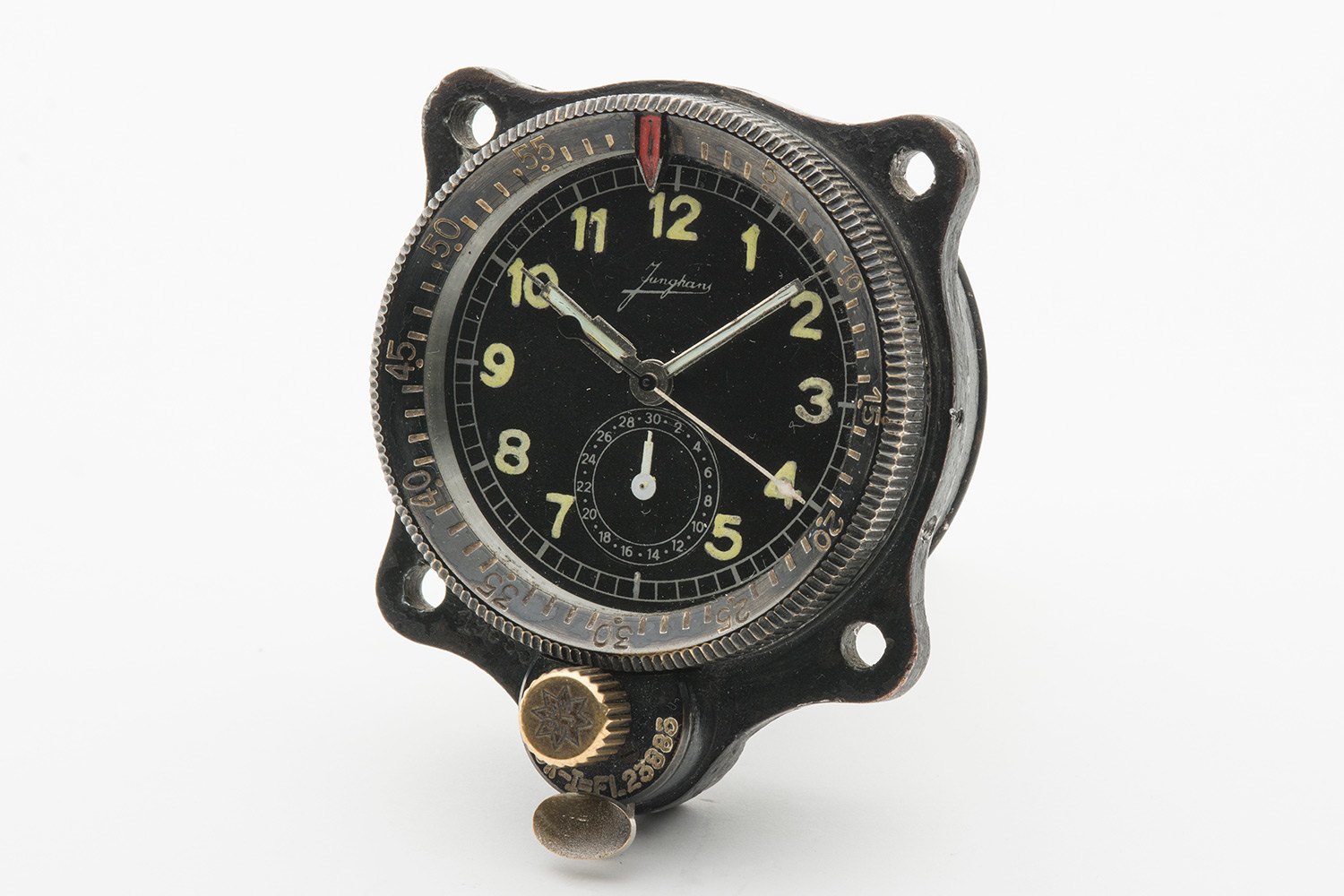
Junghans Airship Clock L55
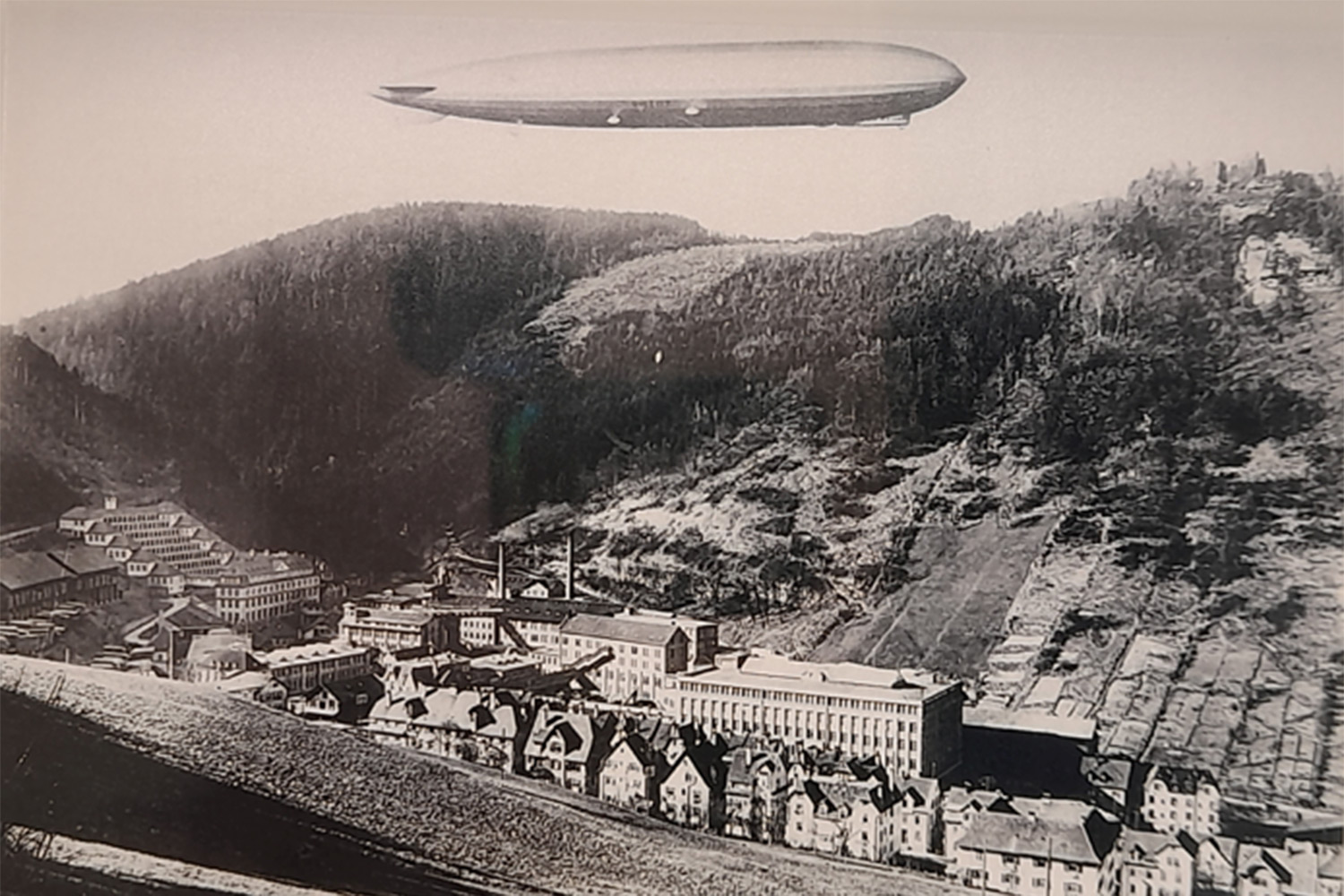
Zeppelin over Schramberg
The advancement of technology not only enabled unprecedented altitudes to be reached but also facilitated longer distances to be covered. In the 1930s, Junghans addressed the need to keep passengers informed of the current local time during journeys spanning multiple time zones by developing a special clock system for airships. This innovative system incorporated electronic synchronization, allowing only the main clock in the control gondola to be adjusted, while all auxiliary clocks in cabins and dining areas automatically synchronized with it. One remarkable example of this technology is the Junghans Airship Clock L55.
Throughout the 1930s, Junghans supplied onboard clocks for various aircraft, including the Messerschmidt Me 110. A notable timepiece from this period is the 24-hour onboard clock with a second time zone, which Junghans produced in the 1950s as one of the few companies in the aviation industry to do so. This exemplifies the changing perception of space and time in aviation.
Furthermore, when the newly established Bundeswehr was in search of a reliable service watch for its pilots, Junghans was awarded the contract for its pilot chronograph. This exceptional timepiece was powered by the J88 intermediate wheel chronograph, which had been meticulously developed and tested to withstand all centrifugal forces in Schramberg.
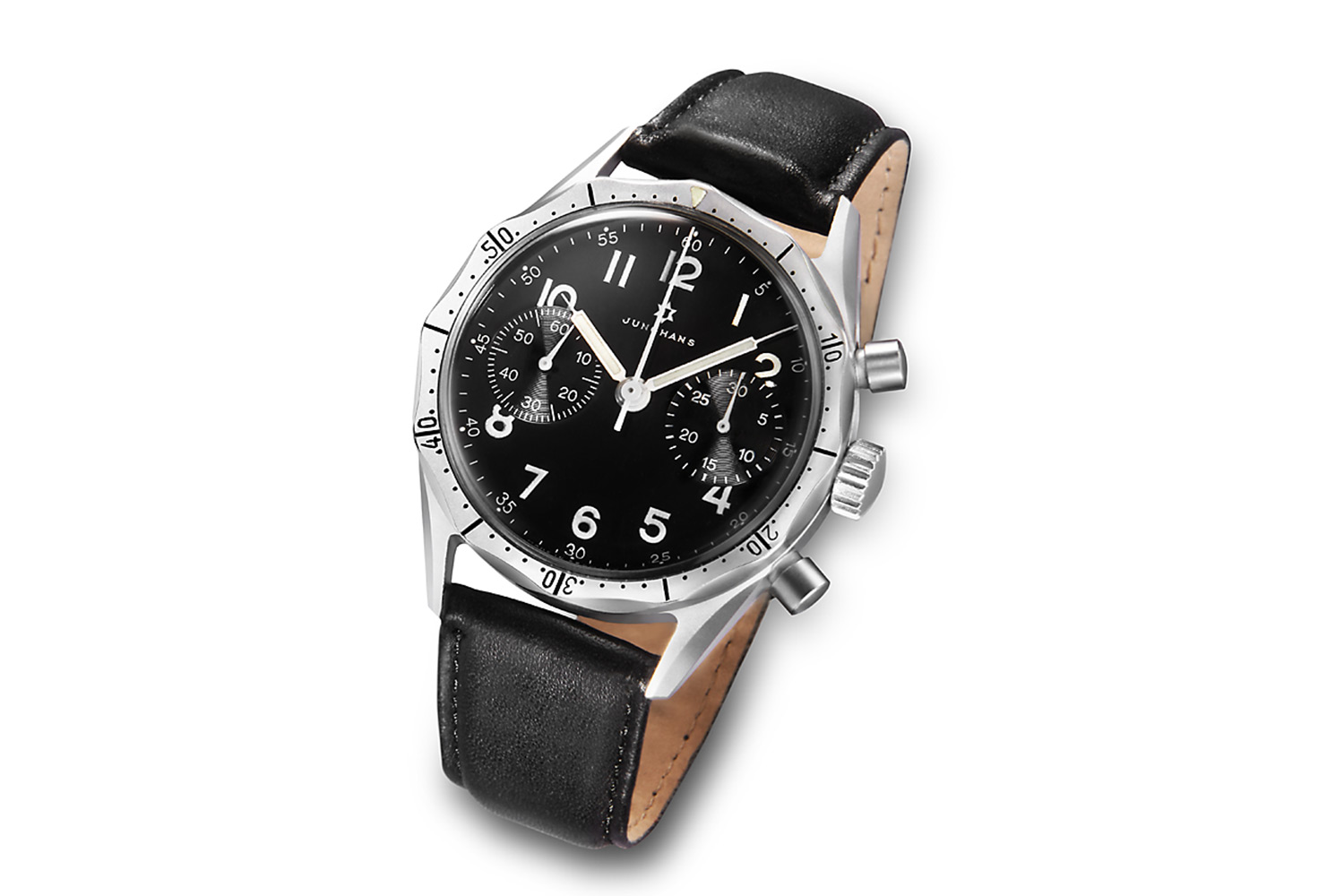
Bundeswehr Chronograph 1958
The Junghans J88/0110 was delivered to the Bundeswehr in 1959 and its appearance is very similar to the two predecessors – Hanhart chronographs 417E (brass) and 417ES (stainless steel). The issued watch had “Versorgungsnummer” (supply number) of (6645-) 12-124-8591 or 12-120-9351. The J88 chronograph had a chrome-plated brass case, domed Hesalite crystal, radium numerals, and a rather small diameter of 38 mm. The Junghans Bundeswehr Chronograph was fitted with the beautiful 19 jewels column wheel caliber, commonly known as the Caliber J88, which had been sitting in a Junghans drawer since the end of the Second World War. The J88 movement does not feature the flyback complication and is the only manual chronograph movement delivered to the Bundeswehr that doesn’t feature a flyback complication.
Junghans produced the J88 from 1950 until the mid-60’s and after supplying the watches to Bundeswehr, it later sold them to civilians. Model J88/0110 was quickly followed by the more common J88/0111 with the characteristic twelve-edged bezel. The German Airforce pilots loved the bezel since it was easy to operate, even with gloves. The twelve-edged bezel to this day remains unique, found only in the Junghans Meister Pilot collection.
Junghans experimented with various Pilot’s watch designs during the late 90’s and the 2000’s. In 2016 the brand introduced a replica of the Model J88/0110 called “Meister Pilot”, an oversized pilot watch powered by ETA 2824/Sellita SW200 with a Dubois Depraz 2030 module. It became an instant success for Junghans with the identifiable twelve-edged bezel and vintage inspired dial.
Unlike the 2016 edition which was a replica of Model J88/0110, the latest limited edition Junghans Meister Pilot Chronoscope in navy blue dial pays homage to the legendary North American Curtiss P-40 from the history of the US Air Force. It is more masculine than the normal Meister Pilot Chronoscope due to the combination of DLC-coated case and navy blue dial with red accents. Apart from dial color and DLC-coated the case, the rest remains the same as 2016 Meister Pilot Chronoscope.
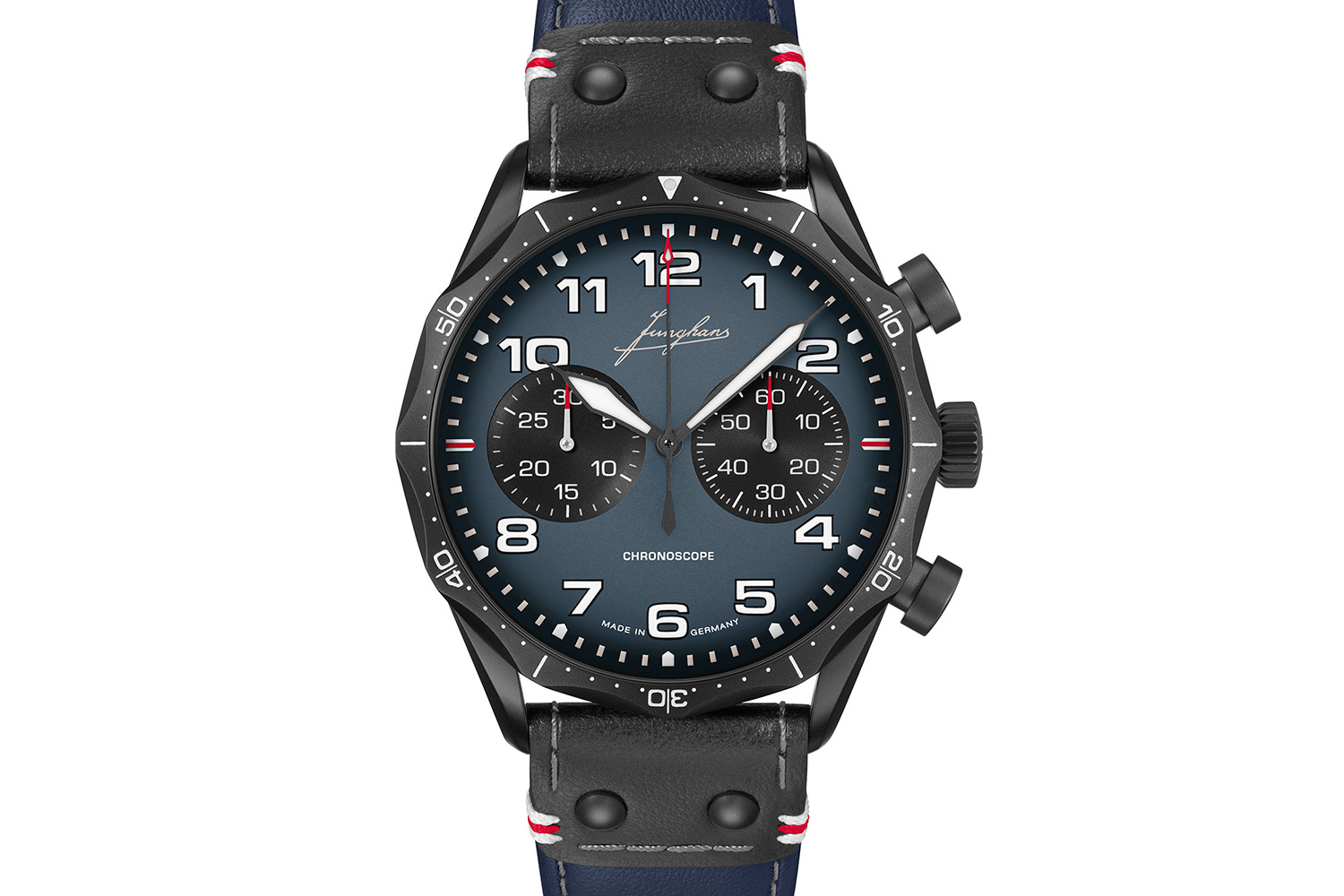
Junghans Meister Pilot Chronoscope
The 43.3mm steel case on Meister Pilot Chronoscope features a very attractive bi-directional rotating bezel, with 12 distinctive concave notches which references the aforementioned chronograph of the 1950s. The chronograph pushers are oval, a feature you do not see that often, and have long shafts. Due to their design, they are easy to operate. The non-screw-in crown is easy to grip and large enough to operate. The crown is signed with Junghans logo, a star with a J in the center. The bi-directional dodecagonal bezel is the icing on the cake and the most recognizable feature of the Junghans Meister Pilot. Handling with gloves is not a problem at all. Even though the bezel is visually intriguing, it lacks a ratcheting bezel to avoid unintentional turns. The domed sapphire crystal has anti-reflective coating on both sides, which makes for great legibility.
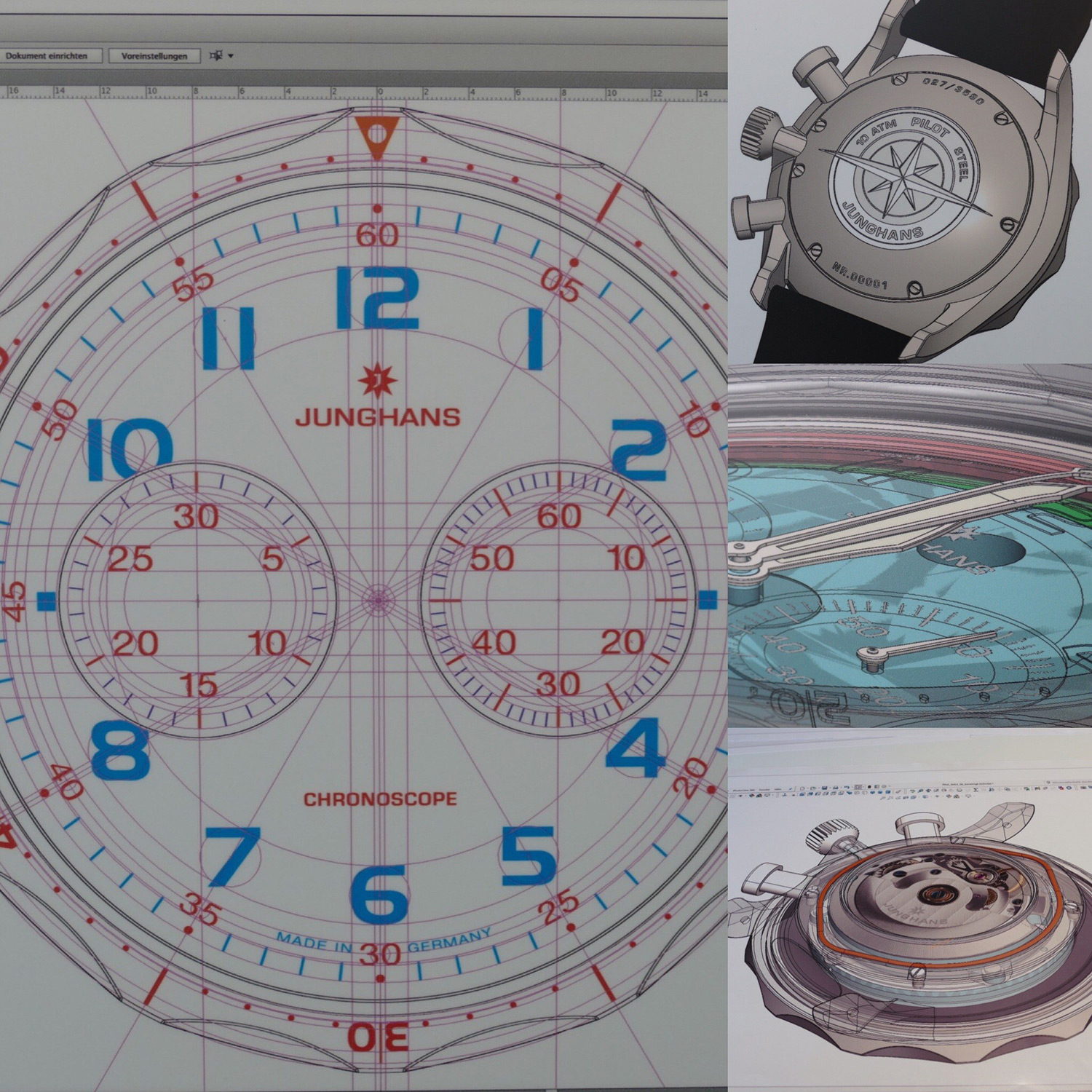
The bi-compax layout on the navy blue dial is well balanced. The recessed sub dials make for a good visual. The hands are in the correct length and contribute to good legibility. The center stop seconds hand is very slim and features a red triangular tip along with an elongated counterweight. Junghans, the company known for Max Bill Bauhaus design, made the imprints on dial minimal and in miniature font. The printed Arabic numerals have a generous coat of luminous numerals (printed) and sword-shaped hour and minute hands. The case back is solid featuring a hand-drawn nose art engraving. The convex shape with short curved down lugs, make the watch extremely comfortable to wear. A much-needed feature for those with a smaller wrist.
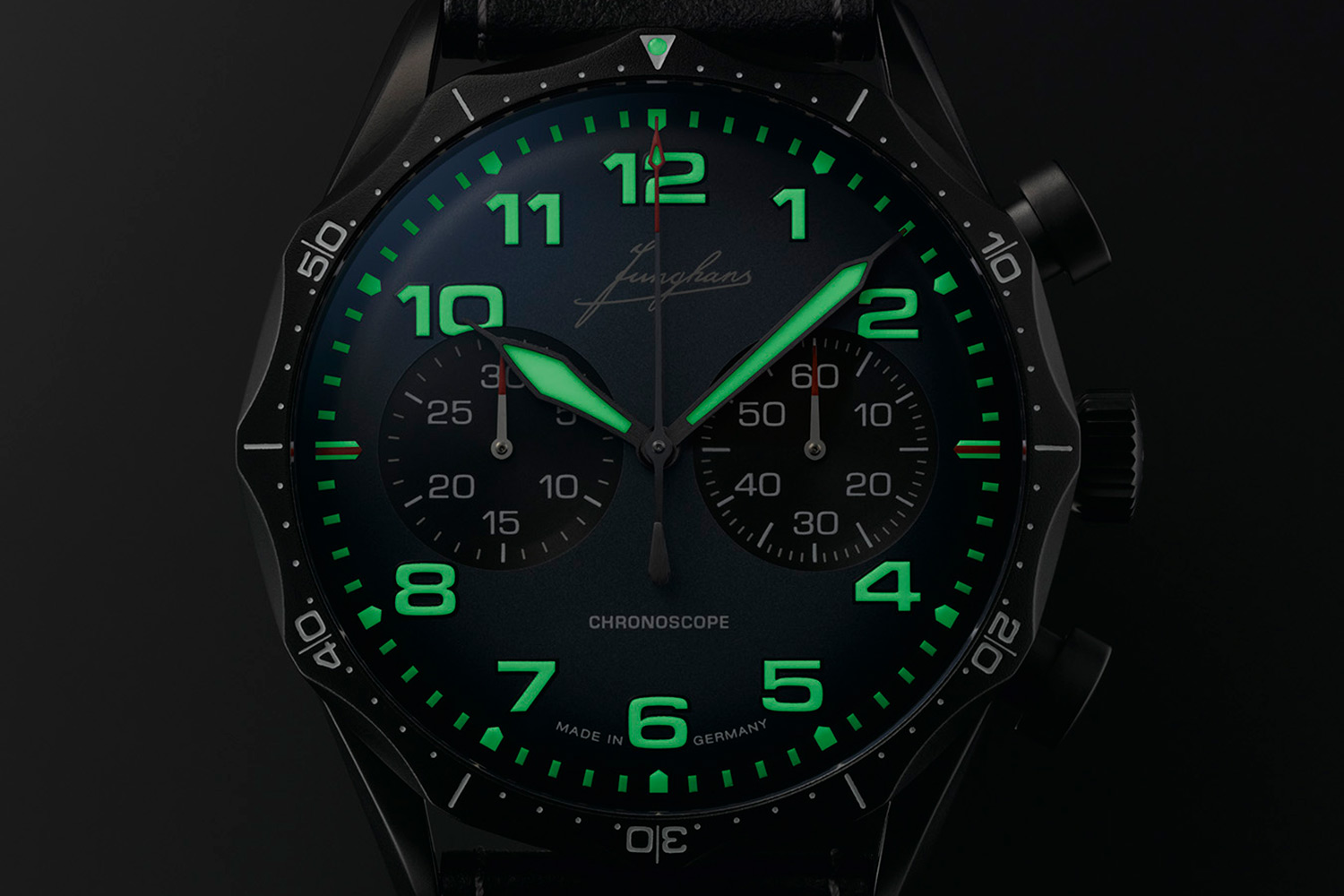
Meister Pilot Chronoscope is powered by J880.4 automatic movement, which is essentially an ETA 2824-2 or Sellita SW 200-1 base, with an additional Dubois-Depraz 2030 chronograph module. The pilot-style strap is in black and navy blue 22mm calf leather with a DLC-coated stainless steel buckle.
For a Pilot’s watch enthusiast, Junghans Meister Pilot Chronoscope incorporates a lot of vintage vibes. With a retail price of $2,910, this limited-edition chronograph is adequately priced and worthy of value the watch provides. It can be an excellent choice if you are looking for a German made chronograph with a genuine history and an overall unique design.
Junghans Meister Pilot Chronoscope Navy Blue Ref. 27/3396.00Movement: Self-winding J880.4 caliber (ETA/Sellita base with Dubois-Depraz 2030 chronograph module); 38 hours power reserve
Functions: Hours, minutes, small seconds, 30-minute chronograph
Case: 43.3mm x 14.4mm, DLC-coated stainless steel, 100 meters water resistance
Dial: Navy blue with red accents, hands filled with environmentally friendly luminous substance
Strap: Leather strap with riveting, DLC-coated stainless steel buckle
Availability: Limited to 300 pieces
Price: USD 2,910






